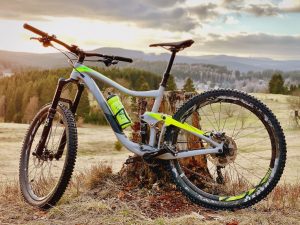Rules of the Road: Bicycle Laws in Colorado
Request Free ConsultationNavigating the streets on a bicycle can be an exhilarating and eco-friendly way to commute or enjoy the outdoors. Part of the enjoyment comes from being safe by understanding and abiding by the bicycle laws in Colorado.
Whether you’re a seasoned bicyclist or just starting out, knowing your rights and responsibilities on the road is essential.
In this comprehensive guide, we will explore the specific traffic laws applicable to bicyclists in Colorado, providing valuable insights and practical tips to help you ride confidently and responsibly.
Additionally, we will shed light on the importance of seeking legal assistance from a Denver bicycle accident lawyer if you’ve been involved in a bicycle-related incident.
So grab your helmet, familiarize yourself with the rules of the road, and let’s embark on this journey together, promoting safety, awareness, and a deeper understanding of Colorado bike laws.
What Are the Bicycle Laws in Colorado?
Colorado cyclists are responsible to follow the same rules and regulations as motor vehicles, which includes yielding to pedestrians, using lights between sunset and sunrise, and obeying all traffic signs and signals. (CRS 42-4-1412) However, there are additional rules that apply to cyclists when riding on public roadways:
- Equal Rights and Duties: Bicyclists, whether riding a standard bicycle or an electrical-assisted bicycle, have the same rights and duties as drivers of motor vehicles according to Colorado law. By understanding bike laws, bicyclists can navigate the road safely and confidently, while also being recognized as vulnerable road users.
- Obeying Traffic Signals and Signs: Bicyclists must obey traffic signals, stop signs, and other regulatory signs as outlined by Colorado law. This includes coming to a complete stop at stop signs and following traffic laws when turning left, turning right, or stopping. Adhering to these rules ensures safety and promotes a harmonious flow of traffic for all road users.
- Lane Positioning: Bicyclists should be mindful of their lane position. Colorado law allows bicyclists to ride in a regular traffic lane when necessary, to avoid hazards or make turns safely. It is also important for bicyclists to utilize designated bike lanes where available, promoting their safety and minimizing conflicts with motor vehicles.
- Hand Signals and Right of Way: Clear communication is crucial when sharing the road. Bicyclists should use proper hand signals when turning left, turning right, or stopping, ensuring that their intentions are communicated to motorists and pedestrians. Additionally, understanding right-of-way rules and yielding to pedestrians and other vehicles as required by traffic laws enhances overall safety.
By understanding and following these traffic laws outlined by Colorado state law, bicyclists can confidently ride a bicycle, whether standard or electrical-assisted, while promoting their own safety and being recognized as vulnerable road users.
Let’s continue exploring bicycle laws in Colorado to further enhance everyone’s understanding of bike safety and promote a culture of responsible and harmonious road sharing.
What Other Steps Can Bicyclists Take to Safely Share the Road with Drivers?
- Cyclists must ride as close to the curb as possible – either in a designated bicycle lane, on a paved shoulder or in the right-hand lane. Unless:
- when passing another bicycle or vehicle proceeding in the same direction
- when preparing to make a left turn
- when proceeding straight through an intersection where the traffic is turning right
- when reasonably necessary to avoid hazardous conditions, including fixed or moving objects, parked or moving vehicles, pedestrians, animals, or surface hazards such as potholes or debris
- No bicycle shall be used to carry more persons at one time than the number for which it is designed or equipped.
- No cyclist shall attach themselves or their bicycle to any motor vehicle.
- Cyclists may ride abreast (two people next to each other) if there is no motor vehicle traffic approaching from the rear within a distance of three hundred feet, they are able to fit within one single lane, or they are riding on a path or roadway set aside for the exclusive use of bicycles. Otherwise, cyclists must ride single file.
- The cyclist must keep at least one hand on the handlebars at all times.
- Cyclists must use hand signals for 100 feet in advance of a turn, unless you need both hands to brake or control your bicycle.

Mountain Bikes
For those who may be riding trails instead of public roadways, there are trail-specific guidelines to follow:
- Plan ahead –carry necessary supplies for changes in the weather, and know your equipment, your ability, and the area in which you will be riding.
- Yield appropriately – bicyclists should yield to other non-motorized trail users. Bicyclists traveling downhill should always yield to those heading uphill, unless the trail is clearly signed for one-way or downhill-only traffic.
- Respect trail and road closures – do not trespass on private land, and obtain permits as required.
- Leave no trace – stay on existing trails and do not create new ones. Don’t cut switchbacks, and do not leave any trash of any kind on the trail.
- Control your bicycle – obey speed regulations and recommendations and ride within your limits.
- Respect wildlife – give animals enough room and time to adjust to you, and avoid sudden movements and loud noises.

eBikes
eBikes are becoming more and more popular in Colorado. Local governments have final say in where eBikes can be ridden. Typically, they are allowed on roads and have the same rights and responsibilities as non-electric bicycles.
- In most cities in Colorado, eBikes are not permitted to be ridden using the electric-assist when on paved bike or pedestrian paths.
- All 42 Colorado state parks allow eBikes on mountain bike paths, but rules for city and county trails vary throughout the state. On these paths, eBikes are expected to follow the same rules as mountain bikes (see above.)
- On Federal lands, eBikes are considered motorized vehicles and are generally only permitted on trails that allow ATVs, motorbikes, etc.
With such a variety of rules and regulations for eBikes, it is best practice to always check with the governing agency on eBike rules prior to riding.

Bicycle Accidents
In most cases, it is illegal for cyclists to ride on the sidewalk and are expected to ride with traffic, not against it – so as someone driving a motor vehicle, please be courteous, share the road, and obey all traffic laws, signs, and signals.
When passing a bicyclist, allow at least three feet of space between your car and the cyclist.
With so many motor vehicles and bicycles sharing the road, these laws strive to help bicyclists avoid motor vehicle collisions.
Although Colorado may not currently have a law that requires bicyclists to wear helmets, it is the number one piece of safety advice we can provide to cyclists – please always wear a helmet, ride safely, and follow all Colorado rules and regulations.
If you have been injured in a bicycle accident, we suggest you take the following steps:
- Take photos of your bicycle, the vehicle, the location of the accident, and most importantly, any injuries you have sustained
- Get the contact information of the motor vehicle driver, including name, phone number, and auto insurance
- Call the police
- Seek medical attention as needed
- Call our Denver bicycle accident attorneys at (303) 444-4444 for a free consultation to discuss how we can help you recover compensation for your injuries
